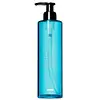What's inside
What's inside
 Key Ingredients
Key Ingredients

No key ingredients
 Benefits
Benefits

 Concerns
Concerns

 Ingredients Side-by-side
Ingredients Side-by-side

Water
Skin ConditioningSodium Cocoyl Glycinate
CleansingCoco-Betaine
CleansingGlycerin
HumectantAcrylates Copolymer
Pentylene Glycol
Skin ConditioningSodium Chloride
MaskingPropylene Glycol
HumectantHydroxyethylpiperazine Ethane Sulfonic Acid
BufferingPhenoxyethanol
PreservativeSodium Hydroxide
BufferingDisodium EDTA
Citrus Aurantium Dulcis Oil
MaskingLimonene
PerfumingAloe Barbadensis Extract
Skin ConditioningChamomilla Recutita Extract
Skin ConditioningCitric Acid
BufferingWater, Sodium Cocoyl Glycinate, Coco-Betaine, Glycerin, Acrylates Copolymer, Pentylene Glycol, Sodium Chloride, Propylene Glycol, Hydroxyethylpiperazine Ethane Sulfonic Acid, Phenoxyethanol, Sodium Hydroxide, Disodium EDTA, Citrus Aurantium Dulcis Oil, Limonene, Aloe Barbadensis Extract, Chamomilla Recutita Extract, Citric Acid
Water
Skin ConditioningPEG-80 Sorbitan Laurate
Glycerin
HumectantGluconolactone
Skin ConditioningAmmonium Laureth Sulfate
CleansingTriethanolamine
BufferingDisodium Cocoamphodiacetate
CleansingMandelic Acid
AntimicrobialSalicylic Acid
MaskingPanthenol
Skin ConditioningMelaleuca Alternifolia Leaf Oil
AntioxidantPEG-150 Distearate
EmulsifyingCocamidopropyl Betaine
CleansingPEG-40 Hydrogenated Castor Oil
EmulsifyingSodium Laureth Sulfate
CleansingSodium Laureth-13 Carboxylate
CleansingSodium Chloride
MaskingPEG-150 Pentaerythrityl Tetrastearate
EmulsifyingPPG-2 Hydroxyethyl Cocamide
EmulsifyingPolyquaternium-10
Polysorbate 20
EmulsifyingBenzalkonium Chloride
AntimicrobialBHT
AntioxidantChlorphenesin
AntimicrobialPhenoxyethanol
PreservativeWater, PEG-80 Sorbitan Laurate, Glycerin, Gluconolactone, Ammonium Laureth Sulfate, Triethanolamine, Disodium Cocoamphodiacetate, Mandelic Acid, Salicylic Acid, Panthenol, Melaleuca Alternifolia Leaf Oil, PEG-150 Distearate, Cocamidopropyl Betaine, PEG-40 Hydrogenated Castor Oil, Sodium Laureth Sulfate, Sodium Laureth-13 Carboxylate, Sodium Chloride, PEG-150 Pentaerythrityl Tetrastearate, PPG-2 Hydroxyethyl Cocamide, Polyquaternium-10, Polysorbate 20, Benzalkonium Chloride, BHT, Chlorphenesin, Phenoxyethanol
 Reviews
Reviews

Ingredients Explained
These ingredients are found in both products.
Ingredients higher up in an ingredient list are typically present in a larger amount.
Glycerin is already naturally found in your skin. It helps moisturize and protect your skin.
A study from 2016 found glycerin to be more effective as a humectant than AHAs and hyaluronic acid.
As a humectant, it helps the skin stay hydrated by pulling moisture to your skin. The low molecular weight of glycerin allows it to pull moisture into the deeper layers of your skin.
Hydrated skin improves your skin barrier; Your skin barrier helps protect against irritants and bacteria.
Glycerin has also been found to have antimicrobial and antiviral properties. Due to these properties, glycerin is often used in wound and burn treatments.
In cosmetics, glycerin is usually derived from plants such as soybean or palm. However, it can also be sourced from animals, such as tallow or animal fat.
This ingredient is organic, colorless, odorless, and non-toxic.
Glycerin is the name for this ingredient in American English. British English uses Glycerol/Glycerine.
Learn more about GlycerinPhenoxyethanol is a preservative that has germicide, antimicrobial, and aromatic properties. Studies show that phenoxyethanol can prevent microbial growth. By itself, it has a scent that is similar to that of a rose.
It's often used in formulations along with Caprylyl Glycol to preserve the shelf life of products.
Chances are, you eat sodium chloride every day. Sodium Chloride is also known as table salt.
This ingredient has many purposes in skincare: thickener, emulsifier, and exfoliator.
You'll most likely find this ingredient in cleansers where it is used to create a gel-like texture. As an emulsifier, it also prevents ingredients from separating.
There is much debate on whether this ingredient is comedogenic. The short answer - comedogenic ratings don't tell the whole story. Learn more about comegodenic ratings here.
The concensus about this ingredient causing acne seems to be divided. Research is needed to understand if this ingredient does cause acne.
Scrubs may use salt as the primary exfoliating ingredient.
Learn more about Sodium ChlorideWater. It's the most common cosmetic ingredient of all. You'll usually see it at the top of ingredient lists, meaning that it makes up the largest part of the product.
So why is it so popular? Water most often acts as a solvent - this means that it helps dissolve other ingredients into the formulation.
You'll also recognize water as that liquid we all need to stay alive. If you see this, drink a glass of water. Stay hydrated!
Learn more about Water